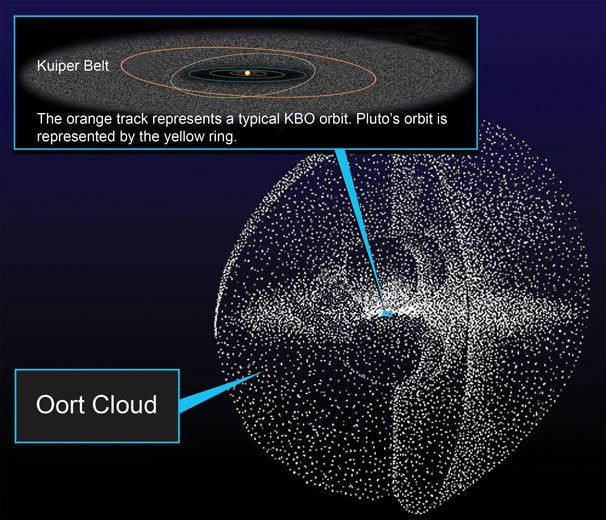Long-Lost Sun: Scientists Propose Solar System Was Once Binary
KEY POINTS
- Scientists from Harvard University are proposing that the solar system once had two stars
- Having two stars could explain Oort Cloud's formation and Planet Nine
- If true, there could be other hidden planets like Planet Nine in the solar system
Scientists from Harvard University are proposing that the sun may have had a solar companion earlier in its life. If proven to be true, it could have possible implications for the origins of the mysterious Oort Cloud and the possible existence of Planet Nine.
Far beyond Pluto and the distant edges of the Kuiper Belt, there is a giant spherical "shell" that surrounds the solar system. Called the Oort Cloud, it is believed to be a thick bubble composed of icy objects that surround the solar system.
The leading idea for how the Oort Cloud came to be is that it formed from the debris left over from the formation of the solar system and its neighbors, with the gravity of the planets shoving the debris away from the sun and the gravity of the galaxy causing them to settle in the borders of the solar system. But exactly how it actually formed remains to be a mystery since models have had difficulties in explaining the proportion of objects in the Oort Cloud.

In a new study, researchers propose a theory that could further explain the Oort Cloud and even Planet Nine: the sun once had a binary companion.
"Here, we consider a temporary binary companion to the Sun that could have existed only in the solar birth cluster, and explore the plausibility and implications of such a possibility for both the formation of the OOC and the capture of Planet Nine," the researchers wrote in their study published in The Astrophysical Journal Letters.
According to the researchers, if the sun did have a binary companion, which most sun-like stars are born with, then it could help explain the origin of the Oort Cloud.
"Binary systems are far more efficient at capturing objects than are single stars," study co-author Dr. Avi Loeb of Harvard University said in a news release from the university's Center for Astrophysics. "If the Oort cloud formed as observed, it would imply that the Sun did in fact have a companion of similar mass that was lost before the Sun left its birth cluster."
Further, the binary model also suggests that the hypothesized Planet Nine could have been captured by the binary instead of formed within the solar system. The current belief is that Planet Nine could have been formed in the inner solar system but eventually got pushed away into the outer solar system.
If Planet Nine does exist and is proven to have been captured, then it's possible that there could be other Planet Nine-like objects in the solar system and, the binary system will be more probable than the long-held single-star model.
The major question now is where the companion star went. According to the researchers, it's possible that it was pulled away by the gravitational forces of other passing stars in the birth cluster.
"Before the loss of the binary, however, the solar system already would have captured its outer envelope of objects, namely the Oort cloud and the Planet Nine population," study co-author Amir Siraj, also from Harvard University, said in the news release. "The Sun's long-lost companion could now be anywhere in the Milky Way."

© Copyright IBTimes 2024. All rights reserved.






















